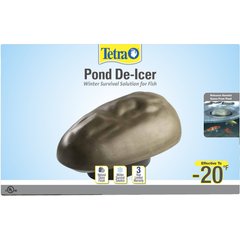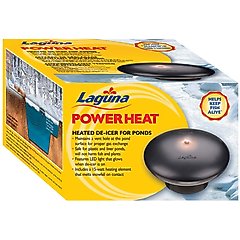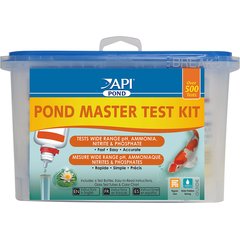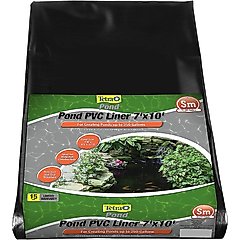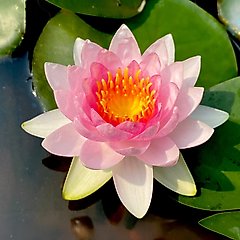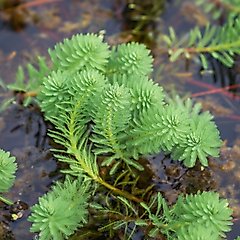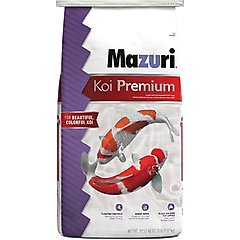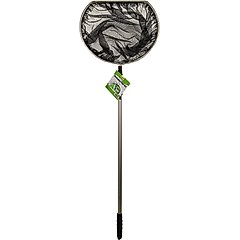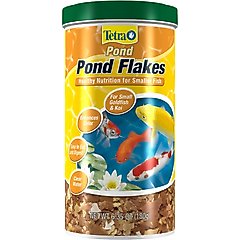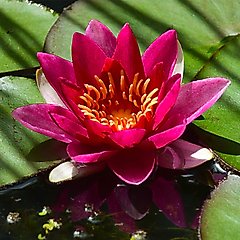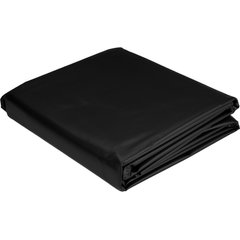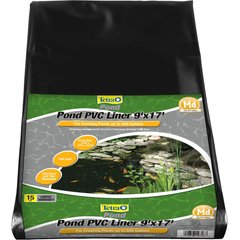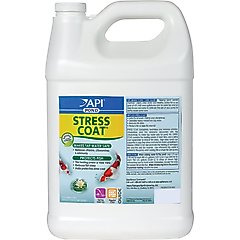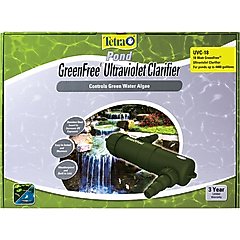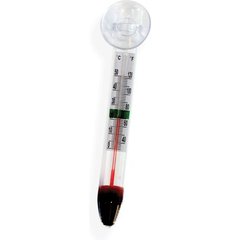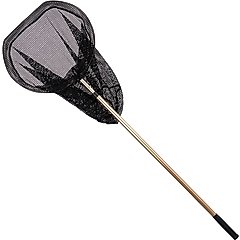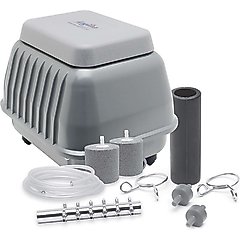Koi Fish Care Sheet

Photo by liangpv/E+
Koi are colorful fish, known for their beauty and large size, with some growing up to 3 feet long.
With good care, including a proper koi pond and specialized koi diet, you can enjoy these fish for generations. Some koi can even live up to 50 years!
Key Takeaways
- Building a proper koi pond is one of the most vital parts of giving your fish a long, healthy life.
- Find the appropriate filtration system that works best for your habitat. Koi need a powerful filter for a clean and healthy environment.
- Make routine water changes every two to four weeks, but only change 10% to 25% of the pond’s total water volume.
Fun Facts
- In Japanese culture, koi represent good fortune and prosperity.
- Show-quality koi fish could sell for over $50,000, depending on breed, color, size, and genetics.
- One small koi typically costs anywhere from $8 to $50.
- The most expensive koi ever sold cost $1.8 million at the 2017 All Japan Koi Show.
Koi Fish Pond
A koi fish pond is integral to your koi’s healthy, thriving life. Adult koi generally need at least 10 gallons for every inch of body length. So for adult koi fish 24–25 inches long, that’s 250 gallons. A school of adult fish might need a 1,000-gallon habitat.
Juveniles that are 6 inches or smaller will be fine with a 29-gallon pond or enclosure. But they grow quickly, so you’ll need to make pond updates every time they grow. Generally, it’s better to have a koi pond already built that is based on their expected adult size.
While you can build your own koi pond, talk to a professional builder about creating a habitat that fits well with your needs.
Koi Fish Community
Think about how many fish you expect to be in your koi fish pond. While you might have a few fish in mind for the short term, you may consider getting more as time goes on. Koi do great amongst their own species, and keeping at least five koi in the same pond is a good idea.
When bringing a new koi into your already established koi family, keep the newbie in a separate enclosure for the first four to six weeks to ensure they are healthy. Introduce new koi gradually and monitor pH, nitrite, and ammonia as they acclimate.
Overcrowding can stress koi out or lead to disease, so make sure your habitat is large enough for all your fish.
Koi Pond Location and Water Care
Because they are generally much larger, outdoor enclosures are more stable and healthier for koi than keeping them indoors. Ideally, the pond should be in a shaded area. Secure habitats to keep out predators such as birds, cats, foxes, and coyotes.
Water depth should be anywhere from 3–6 feet deep, but if you’re in a colder climate with freezing winter temperatures, invest in a pond heater or de-icer. Consider the Tetra Pond De-Icer or the Laguna Power Heat Heated De-Icer as good options.
Recommended Products
Test water regularly with a water test kit, such as the API Pond Master Test Kit, to monitor and maintain stable levels. After introducing new fish, test the water quality at least once a week for two months. You can decrease testing to monthly if water quality consistently stays in an acceptable range. Most importantly, test the water if your fish show signs of stress such as lethargy or labored breathing.
Recommended Product
Regulating water is essential to a koi habitat, so set up a strong filter system. Your filtration system should be powerful enough to process the entire tank’s water at least every two hours. For example, a 2,000-gallon pond would need a flow rate of at least 1,000 gallons per hour (GPH).
Koi Pond Decorations
Include other necessities in your pond, like a durable pond underlayment that protects the lining from roots, sharp objects, or burrowing bugs and rodents. The Pond Boss PVC Pond Liner or the Tetra PVC Pond Liner offer great protection.
Recommended Products
Automatic feeders are a great time-saver, and make it easy for maintaining the pond if you’re on vacation.
You can add rocks and non-invasive aquatic plants to your pond. Koi fish like to eat plants, so make sure any plants they have access to are not toxic. Consider water celery, water lilies, or floating pondweed.
Make sure to remember to consistently care for your pond plants, just as you would care for your fish.
Recommended Products
Koi Fish Food
Keep a variety of flake and pelleted food on hand for your koi. When using frozen food, make sure it’s thawed before feeding.
Recommended Products
Feed your koi only what they can eat in one to two minutes. The most common cause of fish death is overfeeding. Uneaten food turns to waste, and in turn ammonia levels rise. This is highly toxic to fish.
Lightly sprinkle food and let them eat each bite before adding more. Do this for three to five minutes, or until your fish stops showing interest in eating.
Remove any leftover food with a net or pond skimmer daily, like the Tetra Pond Telescoping Pond Net.
Recommended Product
Your pond’s water temperature also affects how often you should feed your koi:
- 55 F or below: stop feeding
- 55–70 F: once every day or two
- 70 F and above: twice a day
Koi Fish Health
Note any signs of an unhealthy koi, including:
- Decreased appetite and activity during warm months (it’s normal for koi to be inactive and not eat during the winter)
- Discoloration in scales, fins, or lips
- Lumps, growths, bumps, or spots that aren’t usually present
- Unusual activity, like staying at the bottom of the pond or buoyancy issues
- Rips or tears in fins
A healthy koi fish has bright color, with clean, intact fins and scales. They display a healthy appetite and have full range of motion with their fins.
Supply Checklist
Koi fish need a lot of space to thrive. Before bringing your koi home, you should have an appropriately sized pond. The best habitat depends on your fish’s size, breed, and how many other fish will be in the tank. Other supplies include:
- Pellet and flake food
Recommended Products
Recommended Products
- Pond underlayment and liner
Recommended Products
Recommended Products
Recommended Products
- Water test kit and thermometer
Recommended Products
- Net and pond skimmer
Recommended Products
Recommended Products
FAQs
How long do koi fish live?
Koi fish can live from 25 to 50 years with proper care.
What do koi fish eat?
Koi fish will thrive on a diet of koi pellets. Smaller koi may also enjoy flake food and freeze-dried food. Most koi eat once daily if water temperatures are 55–70 F.
What do koi fish represent?
In Japanese, the koi fish is called nishikigoi, meaning “living jewel koi.” The fish represents good fortune, prosperity, perseverance, and ambition in Japanese culture.
How much are koi fish?
Costs vary by the age and breed of the koi. Young juveniles can cost between $10 and $100. If you’re looking for a koi for competition and shows, you could pay upwards of $50,000.
Can you keep koi in a fish tank?
No. Keeping koi in a fish tank is not recommended, due to their size. A koi fish pond is best for their habitat needs.
